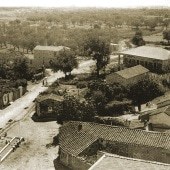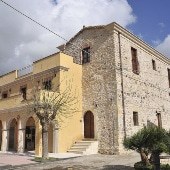Territory
The curatoria (territorial administrative region) of Parte Montis included the territories of the current towns of Collinas, Gonnoscodina, Gonnostramatza, Masullas, Mogoro, Morgongiori, Pompu, Simala and Siris. The presence of some now disappeared villages is also known: Cracaxia (Mogoro), Gemussi (Simala) and Serzela (Gonnostramatza). This territory also includes the abbey of Thamis. Presumably, the territory also included some villages which disappeared during the Middle Ages; however, their precise location is still unknown.
During the age of Judicates, the curatoria of Parte Montis was under the control of the Judicate of Arborea.
More...
Following its defeat by the Catalan-Aragons in the battle of Sanluri in 1409, the Parte Montis, along with the curatorias of Bonorcili and Usellus, was granted as a dowry by Ferdinand I of Aragon to Eleonora Manrique for her marriage to Berengario Carroz, third count of Quirra.
After the end of the Judicate of Arborea and its partial transformation into the marquisate of Oristano, the Cubellos, lords of the marquisate, disputed the Carroz‘s possession of the Parte Montis. However, in 1430 the Carroz had their rights on the area confirmed by the king Alfonso V the Magnanimous, which was followed by further confirmations in 1437 and 1439.
In 1470 a conflict arose between Leonardo Alagon, marquis of Oristano, and Nicola Carroz, viceroy of the Kingdom of Sardinia, owner of the Carroz fiefs in Arborea (curatoria of Siurgus, Barbagia di Seulo and Terranova in Gallura), and also guardian of Violante Carroz (daughter of Giacomo, fourth Count of Quirra), heir of the Carroz’s great fief of Quirra.
In the same year the viceroy was defeated in the battle of Uras and was fended off several times by the armies of the Parte Montis, Monreale, Marmilla and Parte Valenza, territories belonging to the Judicate of Arborea, fighting alongside Leonardo Alagon.
Nicola Carroz managed to resist and counterattack only thanks to his allies from Ogliastra, the first and most faithful vassals of the Carroz of Quirra. In 1478, Leonardo Alagon was definitively defeated during the Battle of Macomer, and the Parte Montis passed under the control of the counts of Quirra.

the MARquiSATe of QUIRRA
The marquisate of Quirra was one of the largest fiefdoms in Sardinia. Its first feudal lords were very close to the Carroz family, whose origins were in Valenza and who had their part in the Catalan-Aragons’ conquest of the island.
More...
Francesco Carroz and his sons Berengario, Francesco, Giacomo and Nicolò supplied money and armed-horses to the king, receiving directorships and the feudal jurisdiction under the mero et mixto imperio rule, which granted a full administration of justice.
The first territories granted to the Carroz family were Ogliastra, Quirra and Sarrabus. Through real permits or by purchase, they later acquired some villages in Cagliari’s Campidano, in Colostrai and in the south-western part of Sardinia. In 1363, Berengario’s son Berengario II was granted the title of count of Quirra from the king Peter IV. Berengario II had a single legitimate daughter, Violante I, who could pass on her son Berengario III her rights over the fiefs thanks to a special privilege granted by the king. In 1409, Berengario III fought in the battle of Sanluri and married Eleonora Manrique, a relative of the Castillan sovereigns, who received the Parte Montis, Parte Bonorcili and Parte Usellus as a dowry.
Having become a widow, Eleonora carefully administered the fiefs before passing them on to her son Giacomo, who maybe had also acquired the city of Iglesias for some years. Giacomo also managed to acquire feudal rights on some towns in Marmilla and in the Monreale Barony. At his death, in 1469, he had a single legitimate daughter, Violante, who was under the supervision of Nicolò, Sardinia’s viceroy and member of the Carroz branch from Arborea. Nicolò hurried the celebration of the marriage between his son Dalmazio and Violante, who had in dowry the title of countess and all her fiefs. Between 1470 and 1478, Nicolò Carroz fought against Leonardo Alagon, who was finally defeated in the battle of Macomer.
Meanwhile, Violante Carroz became a widow and reached the age of majority, advancing her claims to regain possession of her impressive heritage. In 1504, later confirmed in 1506, the territory of Quirra from a county became a “state” and was granted a particular form of ownership called allodium, which allowed the passing of the rights over the fiefs on to the owner’s descendants, even in the female line, without a prior royal approval. At Violante’s death, her possessions passed on to her nephew Guglielmo Raimondo Centelles.
In 1604, the fiefs of Quirra became a marquisate. The sovereigns’ insatiable lust for domination and control led to a series of long-lasting jurisdictional disputes throughout the early modern age. After the Centelles, the marquisate was possessed by the Borgias, dukes of Gandìa, and then by the Català when the Kingdom of Sardinia was already under the Savoys’ reign. The last Marquises of Quirra were the Osorios, a family with Castilian origin, who received their redemption cost for the fief in 1839 by the royal tax authorities.

the VILLAGe
The village was a community of individuals, bond by kinship and neighborhood relationships. The peculiarity of the village, its “fingerprint“, appeared in the position of the buildings inside the settlement, the road network, the course of rivers, the layout of public and private fountains.
More...
The community was linked to its own land by a principle called fundamentu, which consisted in the availability of an appropriate land supply.
The village was the key in the organization of the agricultural landscape, which in Modern-Age Sardinia was characterized by the alternation between the biddatzone, the land intended for agricultural crops, and the paberile, the areas used for grazing purposes.
The right to use specific areas of feudal lands for collecting wood and herbs was normally settled with the Baron through the Capitoli di Grazia, a regulation that addressed the relationships of the Baron himself with the different communities.
The villagers were burdened with feudal taxes that had to be paid to the feudal lord. The main tax was called feu, which had to be paid by every vassal solely because they resided in the fief. Various thematic taxes were requested: the wine tax, the straw and scolca taxes, the tax on the shaving of swines, the tax on the deghino (shaving) of sheeps, the docking tax, the stubble tax and the roadia, which was a service offered to the baron, which could be monetized.
In addition to these taxes, the villagers were also accountable for the maintenance costs of the baronies, offices and prisons.

the DIOCESe of ALES
The diocese of Ales – Terralba was born following the unification of the dioceses of Usellus and Terralba as a result of Julius II’s Papal Bull, in 1503. This merging was part of the broader reform of the Sardinian dioceses, developed by Ferdinand the Catholic, to get more control over the island’s Church.
More...
Little is known about the ancient diocese of Terralba: its pastoral region has affected the territories of the Parte Montis, the Bonorcili and the Monreale.
Among the most important bishops of the Diocese of Ales-Terralba: Giovanni and Andrea Sanna, head of the Sardinian Inquisition; Giuseppe Maria Pilo from Sassari, advocate of the so-called Monti Frumentari (which provided the poorer farmers with the necessary wheat and barley for the sowing season, with the obligation to return the quantity provided; TN), who went on a pastoral visit to the Diocese twice; and Monsignor Michele Aymerich, representative of the Ecclesiastical Stamento parliament in the delegation that presented the «Five Requests» to the Savoy monarch.
The Church’s control over the territory was above all on a spiritual level, but other fundamental aspects were their land possession and jurisdictional role.
Some families living in this territory, through their appointment as members of the Holy Office as familiares, improved their social status and, in some cases, received a noble title.
Before the merging of the dioceses and the final choice of Ales as Episcopal See, Masullas may have been the Episcopal See for a short time.
The churches of St. Leonard (13th century) and St. Lucia (14th century) in Masullas date back to the Middle Ages.
At the beginning of the 16th century, the church of Our Lady of Graces was built; later, in 1650, the convent of the Friars Minor Capuchin was built. The size of the building suggests a considerable financial investment and the choice by the order to give some significance to their convent, which became one of the most important in central-southern Sardinia.

TAPPA DI INSINUAZIONE
Claim offices, called Tappe (plural for Tappa; TN), were established by king Carlo Emanuele III in 1738. Their purpose was to regulate the filing of notarial deeds. Located in the main cities of the kingdom and in the most strategic towns, from a geographical point of view, these offices had to record and keep a copy of the notarial deeds stipulated before notaries within their jurisdictions, within a timeframe of sixty days. Overall, sixteen Tappe were established; one of them was based in Masullas, in this building.
More...
The officer, called Insinuatore, recorded the deeds, kept a copy including it in the relevant records, and maintained the royal seal. It is thanks to this reform if the stories of communities and individuals can nowadays be reconstructed.
The management of these “tappe” was outsourced: Masullas’ Tappa di Insinuazione was outsourced to Don Nicola Cony since 1743. Later on, this role was covered by his son Don Pepi and afterwards by his nephew Don Nicola. With the extinction of the Conys’ direct bloodline, the tappa passed under the control of Don Giuseppe Sepulveda, who inherited it through his maternal lineage. Don Giuseppe married Donna Narcisa Senis, daughter of Don Giovanni Maria, who controlled of the Tappa di Mandas.
In 1839, a royal decree established that all tappe were to return under the control of the Kingdom’s central administration.
Masullas’ Tappa di Insinuazione maintained deeds recorded before 1738. The table below reports all the officers who operated in Masullas:
| Piras Sisinnio | 1651-1723 |
| Mameli Francesco | 1669-1694 |
| Aleo Giuseppe | 1694-1736 |
| Garau Francesco Antonio | 1703-1738 |
| Virdis Rosas Giuseppe | 1720-1782 |
| Turnu Giovanni Antonio | 1738-1783 |
| Cotza Giovanni Francesco | 1740-1754 |
| Floris Giovanni Battista | 1742-1752 |
| Murru Serra Antioco | 1748-1778 |
| Orrù Francesco | 1752-1782 |
| Ortu Efisio Antonio | 1754-1788 |
| Diana Lorenzo Vincenzo | 1759-1774 |
| Maccioni Francesco | 1760-1795 |
| Estara Sisinnio | 1766-1773 |
| Cani Floris Luigi | 1769-1816 |
| Lesura Basilio | 1779-1814 |
| Ibba Antonio | 1791-1798 |
| Orrù Gioachino | 1793-1814 |
| Virdis Giuseppe Antonio | 1794-1818 |
| Coni Francesco Fedele | 1800-1824 |
| Loru Antonio | 1805-1827 |
| Marongiu Domenico | 1807-1828 |

POLO MUSEALE MASULLAS
More...
...allodiale, con la prerogativa di successione anche per linea femminile e l’esercizio in sede giurisdizionale del mero et mixto imperio, che concede il potere di amministrare la giustizia sia nel civile che nel criminale.In ogni curatoria o baronia appartenente al Marchesato vengono istituite le curie baronali e sono nominati i diversi giudici. Le cause sono spesso di natura fiscale, altre riguardano fatti criminali. L’amministrazione della giustizia feudale risulta però confusa e arbitraria: curie senza archivi ordinati, personale dotato di scarsa preparazione, corruzione e connivenza con i bandos organizzati, carceri ridotte al solo ceppo e in locali molto ristretti.
Masullas, oltre alle milizie, ospita in questi locali la curia baronale con le relative carceri.
Nel 1564, per fermare lo strapotere dei baroni nell’amministrazione della giustizia, il sovrano spagnolo Filippo II istituisce il tribunale della Reale Udienza, che giudica in appello sulle cause tra vassalli, villaggi e feudatari.
A farne parte sono letrados esperti in materie giuridiche. L’incarico più importante all’interno della magistratura è il Reggente della Reale Cancelleria, coadiuvato da altri giudici, come l’Avvocato Fiscale.
In seguito alla richiesta degli Stamenti nel Parlamento, nel 1651 viene istituita la Sala Criminale della Reale Udienza, con competenza sulle cause di natura penale.
Il ruolo che la Reale Udienza assume nel corso del periodo spagnolo non è meramente giuridico, poiché essa col tempo diventa un organo consiliare che supporta i viceré nel governo del Regno.
Info
Ex Convento dei Cappuccini
Via Cappuccini, 57
09090 MASULLAS (OR)
Sardegna
Italia
coopilchiostro@tiscali.it
Collegamenti
- Atti amministrativi
- Termini e condizioni
- Privacy Policy
- Cookie Policy
- CEAS
Newsletter
Iscriviti alla nostra newsletter per rimanere aggiornato sugli eventi del polo museale del comune di Masullas
SOSTEGNO PUBBLICO
PROGETTO NEOLITHIC PARK 3D
CUP: E78D17000220007
Bando CultureLab “Sostegno finanziario alle imprese del settore culturale e creativo per lo sviluppo di progetti culturali innovativi”










